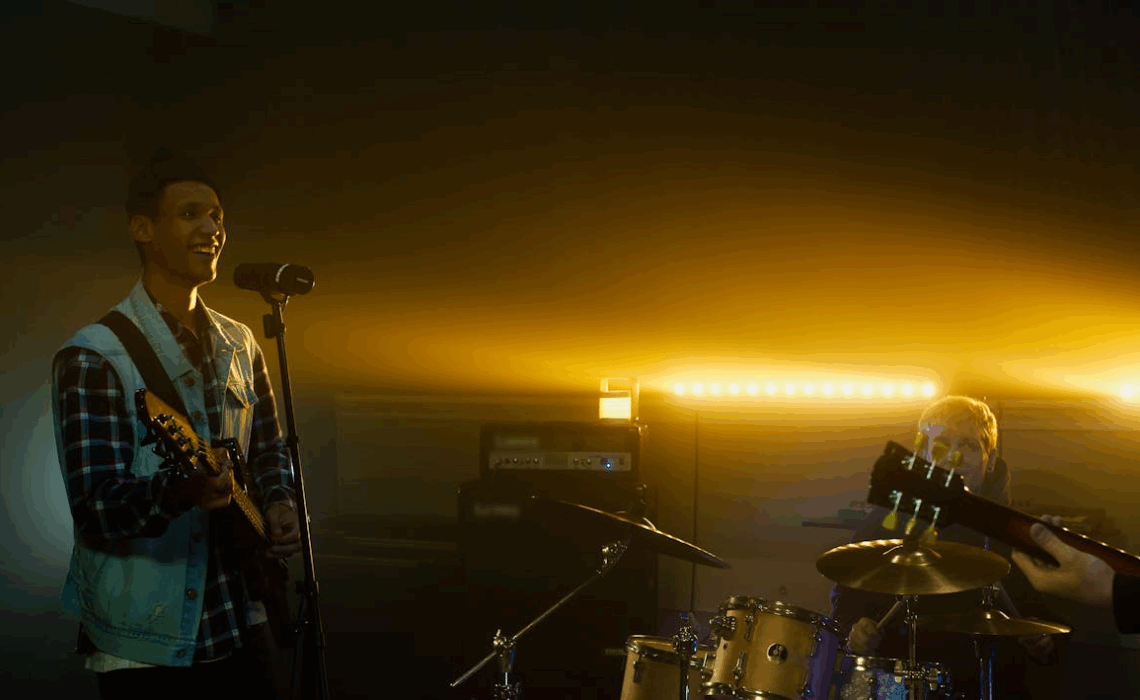
A small stage shifts the moment the lights rise. Color spreads through the room. Shadows lift. The performer steps into a scene shaped with intention. Each cue sets the mood with a clear purpose. Light guides attention in simple, precise ways. The room gains structure that supports each sound.
Artists sense this change as they walk forward. The space outlines every movement. Color shapes the edges of each gesture. A single beam defines the frame around the performer. A gentle fade brings the audience toward the center. Strong lighting helps a compact stage deliver moments with impact.
Smart Light Placement Expands a Small Stage
Small stages depend on precise placement. Lights need a clear purpose and clear direction. Corners provide sharp angles that widen the scene. Ceiling mounts raise the visual line and open the space. Floor units add contrast that strengthens depth. Each position supports a defined visual goal.
Performers gain stronger presence when the layout follows intention. A side beam can shape the outline of the body. A soft wash can lift shadows. A tight spot can frame the face with clarity. Good placement can ease stage fright because the performer sees how the scene supports each movement. Every fixture earns its position through the effect it produces.
Clear placement adds structure to any small venue. Light positions guide the audience with precision. A planned layout helps compact stages create moments with power.
Color Washes Build Mood and Identity on Intimate Stages
Color shapes the first impression on a small stage. A broad wash can shift the room in a single step. Warm tones bring a sense of closeness. Cooler tones create a calm backdrop for slower passages. Deeper shades add weight suited for dramatic sections. Each choice guides the eyes toward the performer with clear intention.
Compact fixtures drive color on a small stage. SHEHDS stage lighting offers numerous solutions for those who need strong output in a tight room. These fixtures shift color with accuracy, respond fast, and give performers full command of each cue.
Color decisions shape how each moment lands. A wide wash can frame the performer with clarity. A subtle change can signal a new direction in the music. A unified palette strengthens the visual identity of the stage. Well-planned color work helps compact venues create scenes with character.
Accent Beams Strengthen Key Moments on Small Stages
Accent beams give small stages sharp visual punctuation. A narrow beam can frame a solo with clear precision. A bright burst can signal the rise of a chorus. A soft edge can guide the audience toward a quieter passage. Each move supports artistic expression in a direct and visible way.
Small stages rely on beams that hold a tight line. A low angle can cast bold shapes across the performer. A higher angle can pull focus toward the center. A focused path prevents spills across the room. Every placement supports the rhythm of the performance.
Accent beams lift key moments with clear force. Light can follow each shift in the music. A timed cue can heighten impact in a compact venue. Sharp accents help small stages deliver moments that rise with power.
Backlighting Creates Depth in Compact Venues
Backlighting adds depth to a small stage. A bright source behind the performer pushes the outline forward. The body gains clear separation from the background. A soft glow can add warmth. A stronger edge can build a sharp contrast. Each choice shapes a scene that feels fuller and more defined.
Compact venues gain range when the fixture behind the performer is placed with intention. A single light behind the center line can lift the outline from a flat surface. Raising the fixture can form a clear silhouette. Lowering it can cast a narrow edge along the shoulders. Tilting the beam can shape one side of the body with precise direction. Each position gives the stage a stronger sense of depth.
Backlighting guides attention toward the performer with clarity. The outline becomes easy to read. Movement gains structure. Light from behind gives compact venues the dimensional lift needed to support a complete performance.
Dynamic Cues Shape the Energy of a Small Stage
Dynamic cues add motion to the scene. A quick shift in brightness can signal a rise in intensity. A slow color change can mark a calmer section. A sharp transition can support a dramatic moment. Each cue links light to sound in a clear and direct way.
Small stages respond well to cues that match the scale of the room. Short pulses can add spark during faster passages. Gradual lifts can support longer notes. Sudden drops can mark key breaks in the set. Each move adds rhythm that strengthens the flow of vocal performances.
Dynamic cues help compact venues present a clear visual arc. Changes in light follow the shape of the music. Key moments become easier to read. Light and sound move together, giving the stage a stronger sense of progression.
Compact Gear Supports Clear and Efficient Stage Layouts
Small stages rely on gear that fits tight spaces. Slim fixtures keep sightlines open. Lightweight units reduce clutter on the floor. Wall mounts free space for instruments and movement. Each choice improves the layout with clear intention.
Placement plays a major role in how the room performs. A raised fixture can widen the scene. A low light can add contrast near the base of the stage. A side position can frame the performer with a clean outline. Each position strengthens the structure without crowding the room.
Compact gear helps small venues maintain flow. Cables are controlled. Angles are clear. Every element sits in a position that supports the performance. A focused layout allows tight stages to deliver a strong visual impact.
Wrapping Up
A small stage can deliver a strong visual impact with lighting that serves a clear purpose. Color shapes mood. Accent beams lift key points in the set. Precise placement builds structure around the performer. Backlighting adds depth suited for compact venues. Each element works with the next to form scenes that rise beyond the limits of the room.


